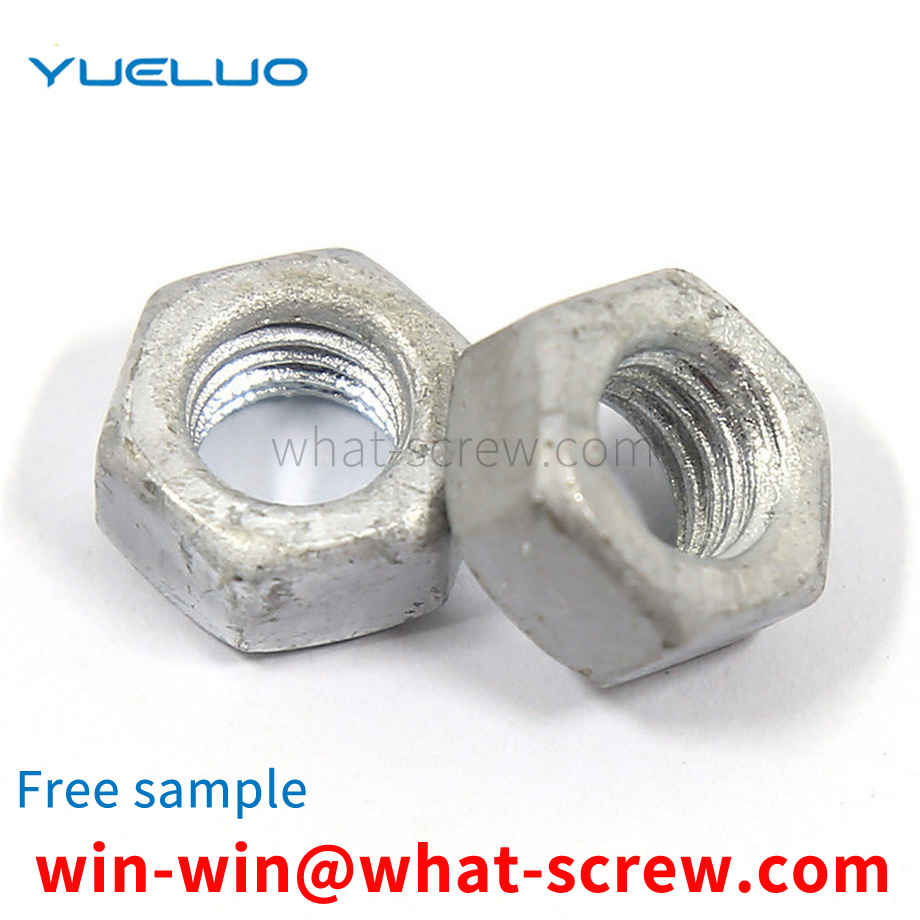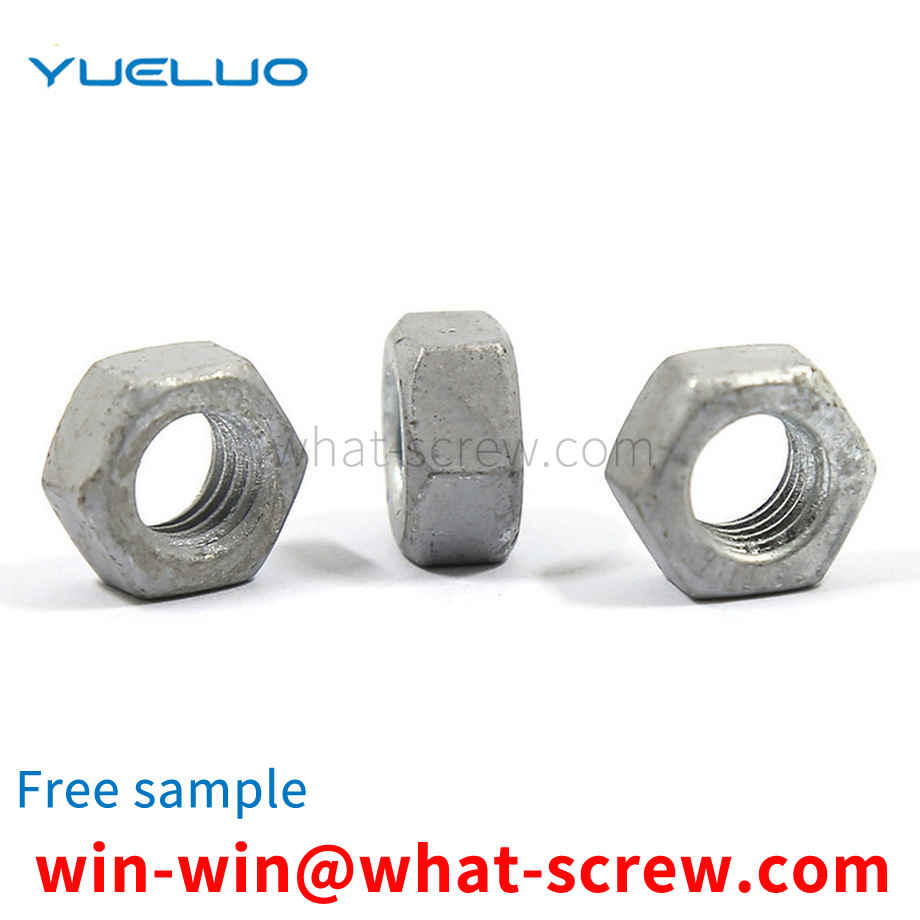Fasteners are a type of mechanical parts that are used for fastening connections and are widely used. Fasteners are used in a wide range of industries, including energy, electronics, electrical appliances, machinery, chemicals, metallurgy, molds, hydraulics, etc., in various machinery, equipment, vehicles, ships, railways, bridges, buildings, structures, tools, instruments, etc. , chemical industry, instruments and supplies, etc., you can see all kinds of fasteners, which are the most widely used mechanical basic parts. It is characterized by a wide variety of specifications, different performance uses, and a very high degree of standardization, serialization and generalization. Therefore, some people also refer to a type of fasteners that have been standardized as standard fasteners, or simply referred to as standard parts.
R-type plastic rivets, also known as expansion rivets, are composed of plastic sub-nails and female buckles. It is not necessary to use installation tools during installation, place the installation base in the smooth hole, and then press the head, the specially designed feet expand and stretch after being stressed, and are firmly locked on the installation surface. It is often used to connect plastic shells, lightweight boards, insulating materials, circuit boards, or any other thin, light-weight materials. It is beautiful, practical, and easy to use.
Due to its convenient operation, quick-release screws are widely used in aviation recording equipment, such as the operation panel on the central console of the aircraft, the upper operation panel, etc. However, the assembly of quick-release screws needs to be assembled in sequence. Springs and quick-release screw rods, usually the quick-release screw crimping tools provided by external suppliers can only crimp some small-sized quick-release screws, or custom-made quick-release screw crimping tools for a certain product, time and cost are very high, so it is necessary to design a quick-release screw assembly device for general aviation airborne equipment.
Below in conjunction with the accompanying drawings, Guangdong Yueluo Hardware Industry Co., Ltd. is described in further detail. Please refer to FIG. 2 and FIG. 3, a locking nut includes a nut 1, the bottom is circular, the middle is hexagonal, the top is circular, there is a bolt hole in the center, and the side wall of the bolt hole is threaded. A number of flattening notches 2 are arranged on the top of the nut. According to the locking nut of the preferred embodiment of Guangdong Yueluo Hardware Industry Co., Ltd., the number of the flattening notches 2 is three. Due to the above features, the three flattening gaps can be used as the focal point of the tightening tool and the clamping place of the anti-loose gasket bayonet, and the structure is simple and can be formed by die stamping at one time. The above disclosure is only a preferred embodiment of Guangdong Yueluo Hardware Industry Co., Ltd., and does not limit itself. Any person skilled in the art, without violating the spirit of the present invention, can think of changes that fall within the scope of It is within the protection scope of Guangdong Yueluo Hardware Industry Co., Ltd.
High-strength fasteners must be quenched and tempered according to technical requirements. The purpose of heat treatment and tempering is to improve the comprehensive mechanical properties of fasteners to meet the specified tensile strength value and yield ratio of the product. The heat treatment process has a crucial impact on high-strength fasteners, especially its intrinsic quality. Therefore, in order to produce high-quality high-strength fasteners, advanced heat treatment technology and equipment must be available. Due to the large production volume and low price of high-strength bolts, and the threaded part is a relatively fine and relatively precise structure, the heat treatment equipment is required to have large production capacity, high degree of automation, and good heat treatment quality. Since the 1990s, the continuous heat treatment production line with protective atmosphere has dominated, and the shock bottom type and mesh belt furnace are especially suitable for heat treatment and tempering of small and medium-sized fasteners. In addition to the good sealing performance of the furnace, the quenching and tempering line also has advanced computer control of atmosphere, temperature and process parameters, equipment failure alarm and display functions. High-strength fasteners are automatically controlled and operated from feeding-cleaning-heating-quenching-cleaning-tempering-coloring to offline, which effectively ensures the quality of heat treatment. The decarburization of the thread will cause the fastener to trip before the resistance required by the mechanical properties is reached, which will cause the failure of the threaded fastener and shorten the service life. Due to the decarburization of the raw material, if the annealing is improper, the decarburized layer of the raw material will be deepened. In the process of quenching and tempering heat treatment, some oxidizing gas is generally brought in from outside the furnace. The rust of the bar wire or the residue on the surface of the wire rod after cold drawing will also decompose after being heated in the furnace, and some oxidizing gases will be generated by the reaction. For example, the surface rust of steel wire, which is composed of iron carbonate and hydroxide, will be decomposed into CO₂ and H₂O after heating, thus aggravating decarburization. Studies have shown that the degree of decarburization of medium carbon alloy steel is more serious than that of carbon steel, and the fastest decarburization temperature is between 700 and 800 degrees Celsius. Because the attachments on the surface of the steel wire decompose and synthesize carbon dioxide and water very quickly under certain conditions, if the furnace gas of the continuous mesh belt furnace is not properly controlled, it will also cause excessive decarburization of the screw. When the high-strength bolt is formed by cold heading, the raw material and the annealed decarburized layer not only still exist, but also are extruded to the top of the thread. For the surface of the fastener that needs to be quenched, the required hardness cannot be obtained. Its mechanical properties (especially strength and wear resistance) decreased. In addition, the surface of the steel wire is decarburized, and the surface layer and the internal structure have different expansion coefficients, and surface cracks may occur during quenching. For this reason, during quenching and heating, the top of the thread should be protected from decarburization, and the fasteners whose raw materials have been decarburized should be properly carbonized, and the advantages of the protective atmosphere in the mesh belt furnace should be adjusted to the original carbon-coated parts. The carbon content is basically the same, so that the decarburized fasteners are slowly restored to the original carbon content. The carbon potential is preferably set at 0.42% - 0.48%. The carbon coating temperature is the same as the quenching heating, and cannot be carried out at high temperatures , so as to avoid coarse grains and affect mechanical properties. The quality problems that may occur in the process of quenching and tempering of fasteners mainly include: insufficient hardness in the quenched state; uneven hardness in the quenched state; excessive quenching deformation; quenching cracking. Such problems in the field are often related to raw materials, quenching heating and quenching cooling. Correctly formulating the heat treatment process and standardizing the production operation process can often avoid such quality accidents.
We have many years of experience in the production and sales of screws, nuts, flat washers, etc. The main products are: open countersunk rivets, electric control cabinet screws, 129 fishtail bolts, and undertake the design and production of screws and other products, we can provide you with suitable fasteners Firmware Solutions.



















 Service Hotline
Service Hotline




